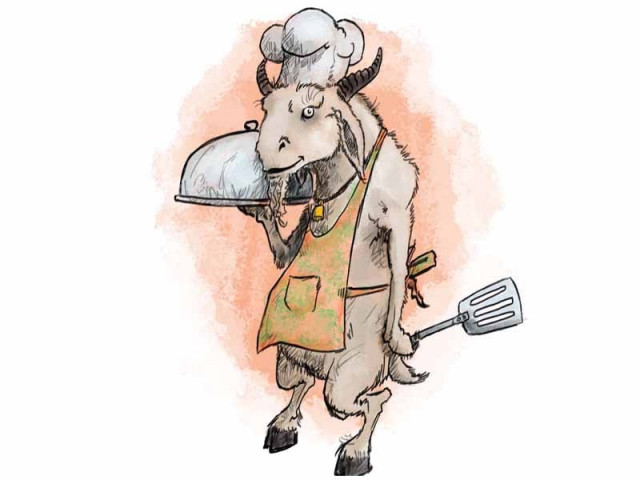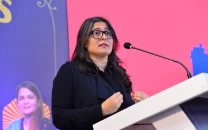Eidul Azha: Of cattle and cuisines
Take a look at the various dishes eaten around the world during the three-day festivities.

Eidul Azha: Of cattle and cuisines
For Muslims across the world Eidul Azha marks the end of the Hajj. Also known as the “Festival of Sacrifice” or “Greater Eid”, it has varying traditions associated with it in different countries but the spirit of celebration remains the same for all Muslims. Food is central to the celebrations, and often are in the form of elaborate family feasts.
Africa
In Morocco, Eidul Azha is referred to as Eid alKabir (big holiday) and after Eid prayers families either convene for the sacrifice or do it individually at their own homes. Prior to this, they will enjoy a breakfast with herbel (wheat and milk soup) and harsha (semolina pancakes).
Hafsa Soussi, a 28-year-old school teacher states, “It’s a tradition to prepare organ meats such as the liver and heart on the day of the sacrifice, which is generally the first day of Eid. The next few days include meatier dishes like steamed lamb and mrouzia (a beef casserole with raisins).
In Somalia xalwo or halwa, made from sugar, cornstarch, cardamom powder and nutmeg powder, is a popular confection served during Eid celebrations. Yasmin Suleyman, a 23-year-old art student, reminisces about her Eid festivities as a child in Somalia, “We would travel to our village on Eidul Azha and sacrifice cows or a camel there and distribute some of the meat amongst the poor. My mother would let the meat slowly cook overnight and on the second day of Eid she would make meat pies from the camel mincemeat”.
Similarly, Eid for Nigerian Muslims is also all about community gathering. Amala — prepared from dried yam powder which is boiled and made like semolina — is the common Eid meal. It is eaten along with condiments. “Mulokhia (a green herb) is prepared with different kinds of pepper and tomato along with meat,” said Om Abdussamad, a Nigerian homemaker. “We also have something similar to Indian biryani, but less spicy called jellof,” she said, reported thepeninsulaqatar.com
Middle East
Apart from the obvious meat dishes present on the table, sweets are particularly popular. Iraqis make a rosewater-scented, date-filled pastry called klaicha. A similar cookie called mamoul, served in Lebanon and Syria, is filled with dates or ground walnuts. Palestinians make a butter cookie with almonds or pine nuts called ghraybeh.
In Saudi Arabia, “You will always find small dishes that contain different types of tateema” (platter of olive variations, cheese, honey, jam and different breads). On the other hand, shakshookah, a Saudi variation of scrambled eggs mixed with vegetables, is made minutes before Eid breakfast as it needs to be served hot,” states Ahmad Khalifa, a Saudi businessman.
Europe
Although the majority of European population comprises of Christians, eastern Europe consists of a large Muslim population, especially residing in the “tan” countries.
Eid is known as Orozo Ait in Kyrgyztan and sees, “Dishes of fruit, candy and salads placed on the table for self-service. The family feasts on plov (a traditional dish with rice, carrots and sheep meat), “reveals Yaqubov, a college student.
In Turkey, dishes often eaten at Eid include “bulgur kospe (cracked wheat parcel, filled with mincemeat and deep fried) and hellimli-zeypinli bitta (haloumi and olive bread)”, states aspiring Turk musician Elkin Ali. However desserts are more popular on Eid. Things like baclava, lokma (deep fried syrupy dumplings), sutlu borek (very thin pastry, covered in syrup), ekmek kadayifi (bread pudding) and kurabiye (a biscuit, dusted with icing sugar) are very popular.
Asia
Pakistanis like to devour all the meaty delacacies like kaleji (kindneys), maghaz masala (brain curry), nihari (beef curry) and paye ka salan (sticky curry made from goat hooves). Sejal Tariq, a homemaker, reveals, “I’m very finicky, never liked eating qurbani ka ghosht, so Eidul Azha is a time for me to turn vegetarian.” Seviyan, or vermicelli noodles, kheer (rice pudding) and sheer khurma are the traditional Eid breakfast in Pakistan, Bangladesh and India.
In Malaysia, Eid is called Hari Raya. Beef rendang and nasi lemak (spicy meat curry cooked with coconut) are the highlights of Eid. Ayam masak merah — slow braised fried chicken with sweetish tomato and chilli gravy is also famous in the southern parts of Malaysia, reports tourismmalaysia.com.
Smriti Husain, a Bangladeshi based in the UK, states that “Desserts like feerni, kheer are eaten for breakfast! For lunch usually we prepare polao, beef rejala, chicken roast, beef masala and different types of salad. Some prepare haleem as an afternoon snack.”
Did you know?
1. Eidul Azha is celebrated annually on the 10th day of the last month of Islamic calendar.
2. In Pakistan alone nearly 10 million animals are slaughtered on Eid days costing over $3 billion, reports asiancoresspondent.com.
3. The Muslim population around the world in 2011 is estimated to be 2.1 billion, reports islamicpopulation.com
4. Eidul Azha falls approximately 70 days (two months and 10 days) after Eidul Fitr.
Published in The Express Tribune, November 7th, 2011.



















COMMENTS
Comments are moderated and generally will be posted if they are on-topic and not abusive.
For more information, please see our Comments FAQ